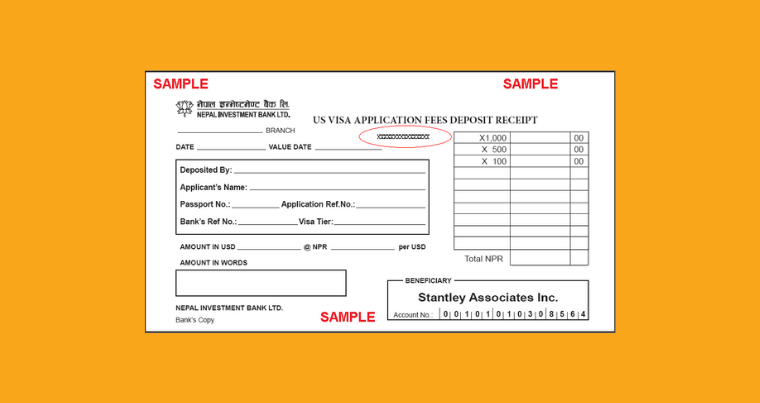Study In The USA: A Brief Roadmap Of US Application Process
Any high-school graduate who aspires to study abroad definitely considers applying to the USA during their study abroad journey. The reasons for such undeniable consideration are apparent. The US education system offers tremendous educational opportunities to students irrespective of their diverse backgrounds. Students can choose various unique courses and institutions to study and experience multicultural perspectives guiding them towards more innovative and creative pursuits.
But, the common yet crucial questions are, "how do we apply to the land of opportunities?", "what are the steps involved in the USA study application? "what are the available intakes for the USA?", "What documents are required to apply?" and "how do we craft our student journey to the USA?". Well, worry not, as this article is just right for you. Let's help you draft a clear roadmap for the US application process.
Choose Your Study Destination: The USA

First of all, you make a choice. You choose based on your personal, academic, and career goals. If those goals align with the US education system and culture, you may start doing thorough research on universities and courses of your choice in the USA. You list proper and concrete reasons to study in the USA as self-assurance is vital. You research available courses, intake timeline, tuition fees, living expenses, job opportunities, quality education, safety issues, permanent residency possibilities, and value back after returning to Nepal while choosing a country. You prioritize these factors and make a decision. If your priority is quality education, the USA is the way to go. The bottom line is that you must have clear and realistic expectations from your choice of study destination as it is about your career, which will eventually shape your future.
Still confused about which country is right for you? Click Here to learn more.
Choose Your University: Accreditations, Intakes, and Courses

Secondly, once you finalize the study destination, you have to select at least 2 to 3 universities or colleges to apply for to choose the best one among them. When choosing any university, the three things you have to check are educational accreditation, course, and intakes.
Educational accreditation is the proof of quality assurance of an educational institution and program. There are two types of accreditations- program accreditation and institutional accreditation. Program accreditation is granted to specific programs like Music, Economics, Law, etc. In contrast, institutional accreditation is granted to Universities and colleges. For instance, the University of Idaho has institutional accreditation by Northwest Commission on Colleges and Universities. The program related to Music at the University of Idaho has accreditation by the National Associations of Schools of Music. In the case of the USA, institutional accreditation is also of two types- national accreditation and regional accreditation. But, you may ask, what is the value of accreditation? Well, the benefits of a well-accredited university, college, and program for international students include easy college/university transfer, measurement of college/university quality standards based on placement, infrastructure, academic input, student care, and financial aid availability.
Talking about available intakes in the USA, there are three intakes in total- fall intake, spring intake, and summer intake. Fall intake is from August to December, Spring is from January to April, and Summer intake is from May to August. Among all three intakes, fall is the most preferred one because you will have a maximum number of course options to choose from, scholarship chances to apply for, and on-campus job opportunities to leverage upon.
Regarding courses, universities in the USA offer a wide range of unique to generic programs. You will see courses like business analytics, machine learning, business administration, hospital management, data science, and many more. But, when choosing any program, make sure that the program offers better research and internship opportunities while in the USA because most universities in the USA provide the same level of quality education. Still, the only differentiating factor for you is the availability of opportunities-research, on-campus jobs, alumni network, student care, and internships - in that particular program, you can materialize.
While shortlisting your university and program, it is recommended to consult with a well-qualified counsellor as intakes, scholarship opportunities, and program availability may vary from university to university.
Talk to our well-qualified, foreign-returned, and friendly counsellor Now!
Research Entry Requirements: Aptitude Tests and Language Proficiency Tests

After you shortlist your universities and colleges, you need to check the entry requirements of that particular course. Basically, the entry requirements include academic requirements like GPA score, language proficiency requirements like IELTS/TOEFL/PTE score, and aptitude requirements like GMAT, GRE score for post-grads, and SAT/ACT score for under-grads. The minimum score requirement for each program under a particular university may vary. Please check before you apply.
Thinking about which language proficiency to take? Click Here to find out more.
Looking for IELTS preparation classes? Book your seat here!
Start Applying: SOP and LOR

You are done finalizing the course and university. You have to start applying with all the necessary documents specified by a particular program under a particular university or college. Generally, the required documents for applying to a US-based university include academic documents, curriculum vitae, language proficiency score certificate, letter of recommendation(LOR), work experience certificate, and statement of purpose (SOP).
Here, SOP is an essay that will reflect your personality stating your career choice, academic background, and professional goal. You write SOP to impress the program's admission committee you will be applying for. Similarly, LOR is a recommendation document written by your mentor, teacher, or employer about you as an applicant to the university. It should reflect your achievements, interests, and ability to study at the university observed by your mentor, teacher, or employer while working or studying under their guidance.
Note: Depending upon the university, college, or program you intend to enrol in, the document requirement may vary. Please check the website of your preferred university before you apply.
The Review Phase: The Admission Committee's Scrutiny

This is when you submit all the required documents and your SOP to the admission committee. The admission committee scrutinizes your personality as a student through your academic background, family background, personal and professional experiences, achievements, future personal and professional goals, and your contribution to society so far stated meaningfully with full of empathetic expression in your SOP. For example, a student who states he wakes up at 6:am in the morning, goes for a walk, comes home and cooks food and goes office at 9:am, takes evening tutoring class at 7 pm, and goes back home to cook food and helps his mother has a higher chance of getting selected than another student who simply states he is a hardworking student. The key here is to make the admission committee feel and believe that you are a genuine student via your essay. So, make sure your SOP is kind of kickass to secure an impactful impression on anyone who reads it because we write not just to express but also to empathize. It is the same with LOR because whatever you claim in your SOP must align with the third person who observes you and writes LOR for you.
The Email Pop-Up: Check Acceptance Letter In Your Inbox

After being selected, the university sends you your acceptance letter with congratulatory remarks. You should open it and read it carefully because it states further steps to request for I-20. Here, I-20 is the essential document that qualifies you to apply for your US visa. Keep checking your email so that you don't miss the deadline for the I-20 request. If you missed the deadline to request your I-20 to the university, you might have to defer your application to a future semester.
Time To Submit Other Documents: Financial documents and Affidavit

When you receive your acceptance letter, it is time to submit your one-day bank balance certificate of at least the amount covering your one-year tuition fee plus living expenses depending upon the university and the state. You also need to submit an affidavit of support if required. This step is not necessary for all US universities as some universities ask for financial documents during the application, whereas some ask for them after the release of the acceptance letter.
Since financial requirements differ from university to university, it is advisable to consult with a trusted counsellor to clear your doubts. Click here for genuine counselling on if you need affidavit or not.
The I-20 Arrival: The Final Stage of University Application

Once you submit all your documents, you will receive your I-20 within the timeframe of one month in general, a certificate of eligibility for non-immigrant student status. The I-20 includes your SEVIS ID (Student and Exchange Visitor Information System), a unique identification number of a non-immigrant student in the USA. The other important information that you will find in your I-20 includes the name of your Designated School Officer (DSO), your program start and end date, your tuition fee, living expenses, scholarships, and some instruction from the Department of Homeland Security.
Now, the question arises about the significance of I-20. Since I-20 states your program start date, it is essential to book your US visa interview dates so that you can reach your university on time. Also while booking, you cannot book a date that is 120 days before your program start date. That is the rule, and we cannot do anything about it.
Fill DS160: The Initial Phase of US Visa Application

You received your I-20, and now what? Well, you have to initiate your US visa application process. The first step is to fill out your DS 160 form by visiting the Online Non immigration Visa Application. Here, DS 160 is like an application form where you have to give in your details honestly because your answers will implicate your US visa interview with the visa officer. Fill it carefully and consciously.
US Visa Interview Dates: Start Booking

One of the significant hurdles of US visa application is booking dates for interviews. After carefully filling out DS 160, you have to start booking your interview dates as soon as possible. You can book your visa interview dates at CGI Federal Portal. Learn more about the Lack Of US Visa Interview Dates: How To Ensure You Get The Dates?
Pay Visa Fees: SEVIS fee and Visa Application fee.

After booking your US visa interview dates, you have to pay your SEVIS fee and interview application fee, as you must submit the receipt of these fees during your visa interview. The SEVIS fee for Nepalese students with the I-20 form is $350, and the visa application fee is $160. It is recommended to pay your SEVIS fee 10 days prior your US visa interview dates.
Attend the US Visa Interview: Gather Confidence and Leverage On Your Genuineness

Appearing for a US visa interview is crucial in your US study journey. You get a few seconds to minutes to convince the visa officer. The decision to grant you a visa is based on basically three parameters-your genuineness as a student, your intention to return to Nepal, and your financial capacity to pay for the tuition fee. So, appearing for the visa interview with confidence and genuineness is the key. The time you get during an interview is very uncertain so be mentally prepared for it. Learn more about Top 5 Reasons Why Nepalese Students Get Rejected During Their US Visa Application
US Visa Results: The Culmination

Finally, after your interview is over, you will get your results on the spot. You will not have to wait for a long time. So the question arises, what if you get your visa denied? Well, since your SEVIS ID will have a validity of one year, you can reapply for another visa interview date multiple times with a new I-20 from another university. It means you will not have to pay your SEVIS fee again and again for one year. However, securing a US visa interview date is still a challenge.
In conclusion, applying to the USA for further studies demands preparation of at least 6 months to 10 months. Before applying, you must be acquainted with the US education system, US teaching pedagogy, culture, application requirement, and visa processes. Without understanding the fundamentals of US application processes, you might get lost. So, for proper guidance, you can reach out to us anytime.


